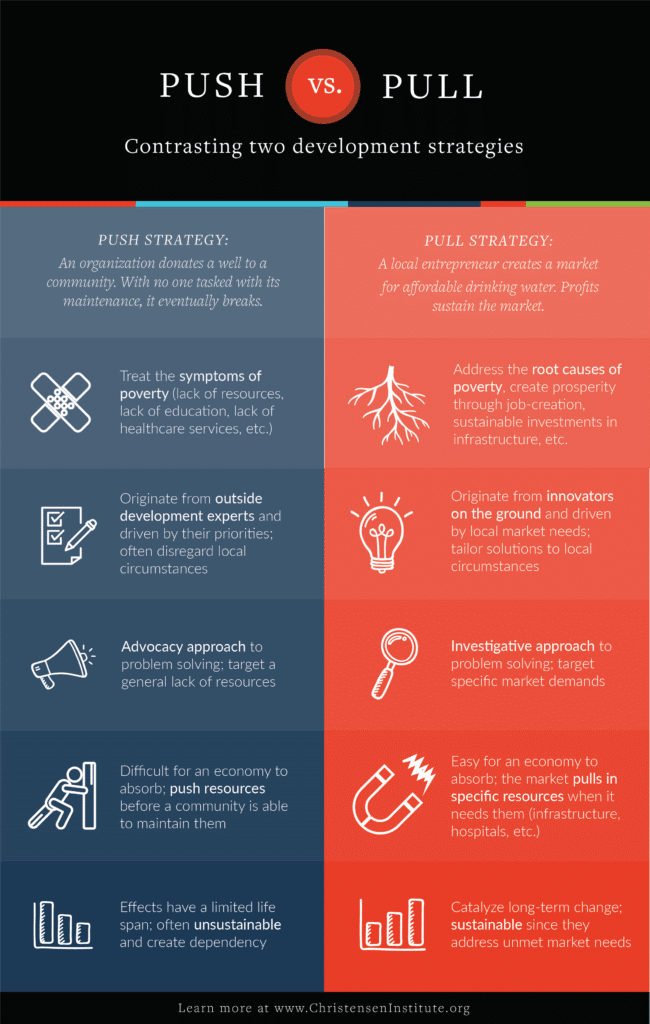Development professionals and government workers are working tirelessly to make a dent in extreme poverty, but what if they have the prosperity equation wrong?
In our research we’ve discovered there are two types of development strategies, and one is far more effective than the other. Pull strategies are often originated by innovators on the ground who are responding to the struggles of everyday consumers or specific market demands. As their innovations are developed, they then pull in appropriate solutions for low- and middle-income countries, such as the infrastructure, resources, and human capital needed to bring the innovations to market. Better yet, these strategies are financially sustainable since they generate revenue that can then be used to maintain and grow the market.
Unfortunately, many development programs are focused on implementing what we call a push strategy, where they directly fund resources and other markers of development. While these programs are vital during times of immediate disaster or during a humanitarian crisis, on their own they rarely create long-term prosperity.
Push strategies are often driven by the priorities of their originators—typically experts in a particular field. Though well intentioned, when outside actors provide communities with resources, too often no sustainable mechanism exists to maintain them.
We break down both approaches here:

For more on push/pull strategies, check out this video to learn how one entrepreneur leveraged a pull strategy to create a market that’s expected to add 4.5 million jobs and create more than $214B of economic value by 2020.
Know of other examples of pull strategies? Let us know in the comments.


